In 2020, there is an acute question of how to reduce electricity consumption, despite the ever-increasing demand. One of the regular discussions on this topic is the choice of an energy-saving heater for the home, because equipment of this type is able to effectively warm up a home, but at the same time save resources as much as possible.
Content
Heater selection
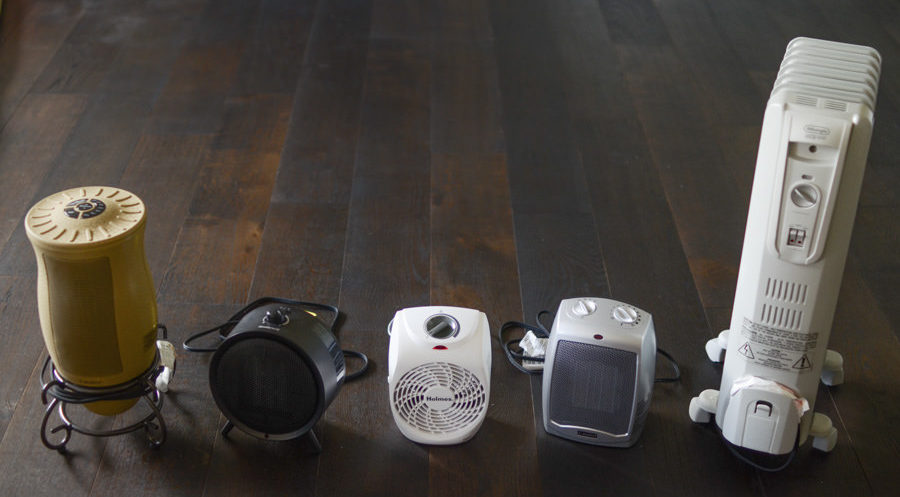
First, a few words about the basic principles of energy saving, how an energy-saving electric heater generally works and how it is useful.
Energy-saving heaters are devices that are used to heat a room, but at the same time consume energy to a minimum.
How the heater works
The device consumes exactly as much resources as it releases heat into the environment. What matters is exactly how much heat it transfers, and then these numbers are converted into energy. Heat losses correlate with the condition of the housing, its insulation, the number of door and window openings, the internal heating of the room, etc. Over time, the entire heated atmosphere goes away, the air inside quickly cools down, so the heater always has work to do.
How to choose a device for yourself
Each type of heater has its own, unique characteristics - positive and negative, as well as purely technical design differences that directly affect the principle of their operation. If you need ultra-fast heating of the air, then it is better to choose a fan heater. If you need a modest, comfortable and easily fit into the interior apparatus, it is better to take a bending canvas. If you are only interested in inexpensive options, then the oil type is suitable. For a bathroom or for a small room in which dust regularly accumulates, a moisture-insensitive infrared convector is best suited. An electric fireplace is ideal for the living room. Wall or ceiling heating can be installed in the children's room. if you have a small child, then he will not be able to reach the equipment ...
In addition to the heater itself, the type of room must also be considered. How long will it be used, what size area needs to be heated, how many heating sources are there, etc. Those. before buying, you need to calculate the area of the room, taking into account the fact that 1 m² of the room = 100 W.
The principle of operation of modern electric heaters
Three methods of heat transfer are structurally distinguished:
- Free convection. Heat transfer is based on the interaction of warm and cold air flows in a common space. The heavier cold air descends, and the warmer, in turn, rises in its place.
- Long wavelength radiation. These include, for example, infrared rays.The bottom line is that devices that work on this principle heat surfaces (walls, ceilings) and objects, due to which the entire internal space heats up and retains heat.
- Heating ventilation. This is a system that includes a heating element and a fan. First, the first heats the air flows, and then the second removes these heat flows outside.
Varieties of electric heaters
Oil
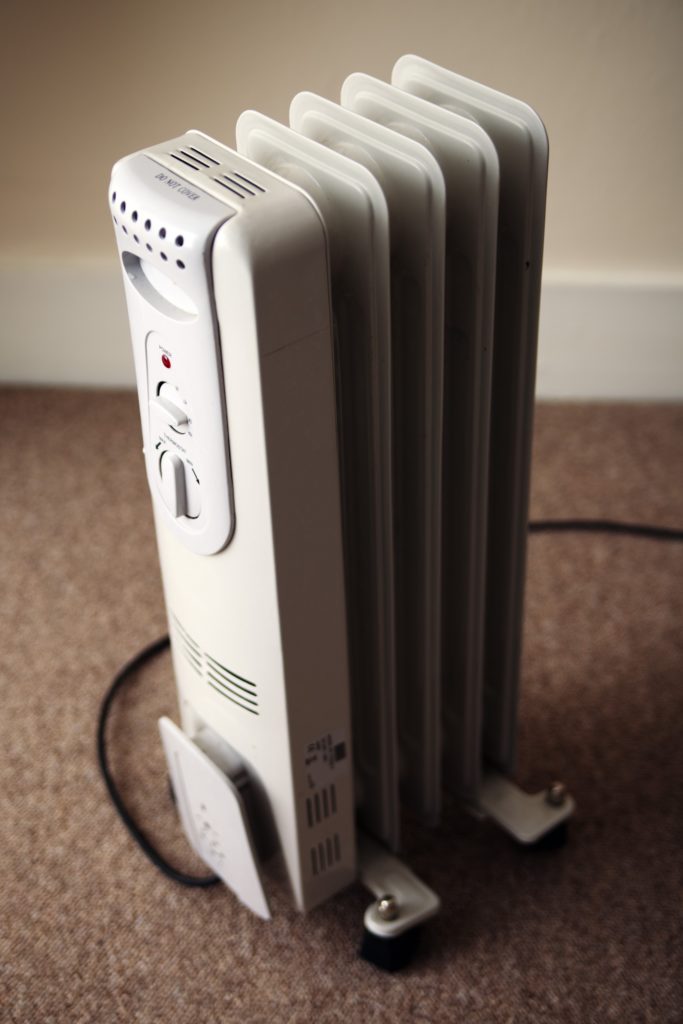
Oil radiators are budgetary, i.e. the most accessible to the majority of the population and the most common among the people models of electric heaters. They are convenient for transportation due to their small dimensions (only an electrical wire can interfere, but this can be easily fixed with a floor gasket). Externally, oil radiators resemble a conventional radiator, but have a sealed metal case, filled with oil. When electricity is connected, the oil begins to heat up, mix and distribute heat throughout the body.
Usually, there is a built-in thermostat inside that maintains a normal heating rate and maintains the temperature regime, protecting the structure from overheating. When a certain temperature threshold is reached, the thermostat turns off all heating functions of the device, and the structure remains in standby mode until the temperature drops to an acceptable level. A similar shutdown when the device rolls over ensures safety when interacting with children, animals, or simply careless owners.
Devices of this type are inexpensive and offer an ideal price-performance ratio. But the heating rate is poor: an average oil cooler takes 10 to 20 minutes to heat up. And they can only be installed on the floor.
Convector
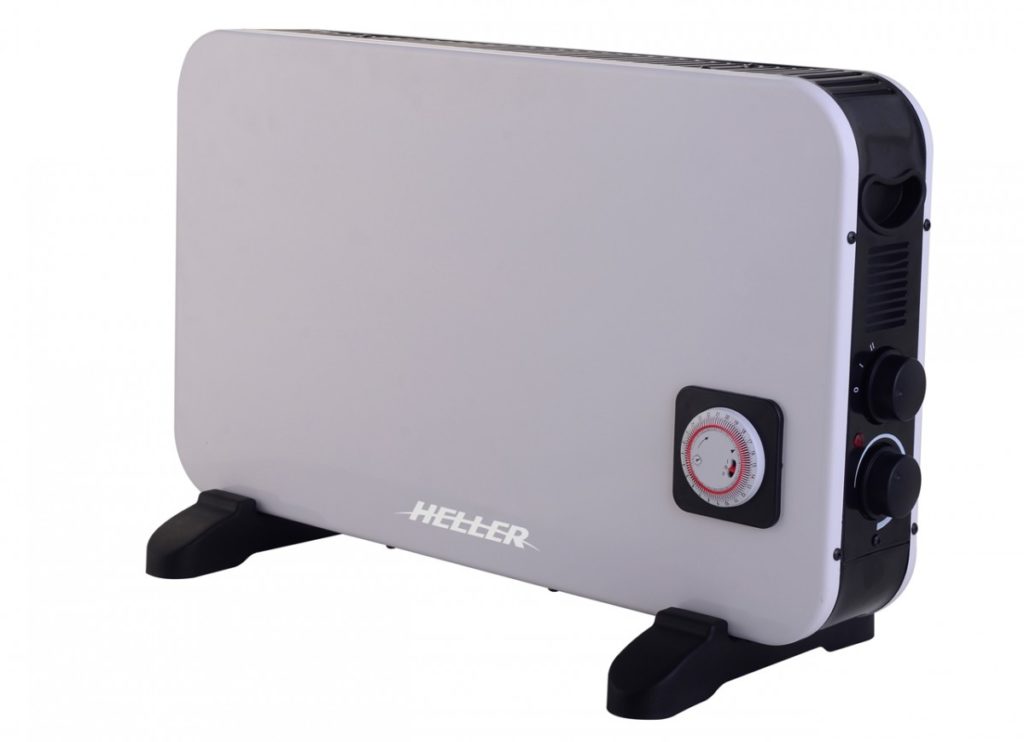
Electrical appliances of the convection principle of operation are small-sized and flat-shaped devices that can be easily built into the interior. Convectors work using a tubular electric heating element - heating element, which is embedded in a special hole in the lower part of the device body. Air masses entering this cavity heat up, enter upward, and exit into the environment through openings from the upper part of the case (sometimes a fan is used to remove air flows).
There is a conditional classification among convector devices. Devices are divided according to the method of their installation, distinguishing four classes:
- Panel, vertical and ceiling convectors, stationary type;
- Panel convectors of mobile type;
- Skirting convectors;
- Concealed (mounted under the floor).
Despite the differences, all devices are equipped with high-precision temperature sensors that monitor every temperature drop. No modern convector model is complete without such technologies.
Infrared
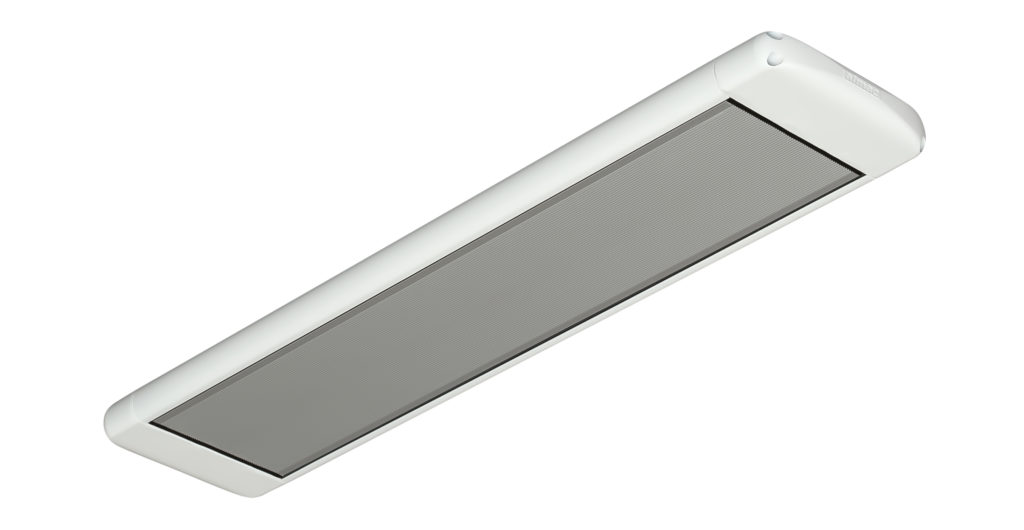
An infrared radiator is the best option for a country house. It has a high heating rate, keeps the air dry, ergonomic, virtually silent, lowers energy costs and has a long service life.
The highest class of protection for devices of this type allows them to be used, including in an environment with flammable substances. Fire safety also completely eliminates the chance of getting burned on the surface of the case (if all conditions are met and the device fits the type of room). And also the use of the IR panel affects the ionization of the air and reduces the toxicity of the air, which also contributes to the therapeutic effect.
A display is built into the body of the device, on which a timer is counted down, which allows you to adjust the overheating prevention system for yourself. And if you don't like manual control, you can use the remote control.
Electric heaters work on the principle of long-wave radiation (infrared waves), which emit heat rays, like solar rays, which heat the environment. In this case, not the air itself is heated, but the area in the coverage area of the heater. Emitters in such devices are halogen lamps, or ceramic / carbon plates, which are heated by heating elements.
The disadvantages of an IR heater include the following aspects:
- The air heating rate is at a high level, however, the temperature drop will be no less sharp in the event of a sudden shutdown of the device (which is sometimes caused by voltage surges).
- Before purchasing the device, it is required to calculate the capacity for a specific type of room. Heating temperature under different conditions can vary significantly. The maximum non-hazardous power is 350 W / m2, otherwise burns may occur on contact.
- Constant dehumidification of the air can lead to certain negative consequences. Especially if there are objects of painting in the room, for which drying out is excessively harmful. So it is recommended to additionally install a humidifier.
Quartz

Quartz-type electric heaters look either as rectangular monolithic slabs, which include pressed quartz sand and nichrome alloy, which completely isolates them from the environment, or as glass tubes in a steel case equipped with an infrared heating element. The first and are associated, in most cases, with the term "quartz heater". The latter are usually called "tubular heaters", they have a completely different principle of operation and belong to the infrared class. It is precisely with such devices that numerous "popular" questions are associated, which have become common nouns and are related to quartzing, such as: "Does a quartz heater help against mold" ...
The quartz heater is connected directly to the mains, while consuming an extremely low amount of electricity. Reliable thermal insulation makes it completely fireproof, the thermostat allows you to configure the device to maintain any temperature in autonomous mode (for example, if the owners visit the house about a couple of times a month, they can leave the average temperature in the room at 10-12 ° C). The overall temperature level of the slab does not exceed 95 ° C. The power of the device is 0.5 kW, and this is quite enough to completely provide a room with an area of up to 8 m2 with heat. This is a completely portable, very oversized heater (average weight - 12 kilograms).
The key disadvantage of the device is that it warms up slowly - it takes a quartz device at least twenty minutes to heat up. At the same time, one device may not be able to cope with heating the room, so it is likely that several parallel units will need to be installed.
This compact device, not distinguished by excessive power, is ideal for those who want to maintain a stable temperature regime in their country house, which they visit several times a month.
Ceramic

Ceramic panel heating combines the design features of a convector and a device with infrared radiation. The hybrid principle of operation of a ceramic heater allows you to distribute infrared rays not only zonal, as it happens on a standard IR panel, but to warm up the entire interior space in general due to the convection properties of the model.
Ceramics, from which the body of this class of devices is made, heats up to 85 degrees Celsius. And the average power consumption of a ceramic device is 375 watts, which is even less than the power consumption of a computer. The performance of these heaters exceeds the performance of infrared devices, and their installation in a private house actually replaces the heating system and does not require a boiler room.
Film
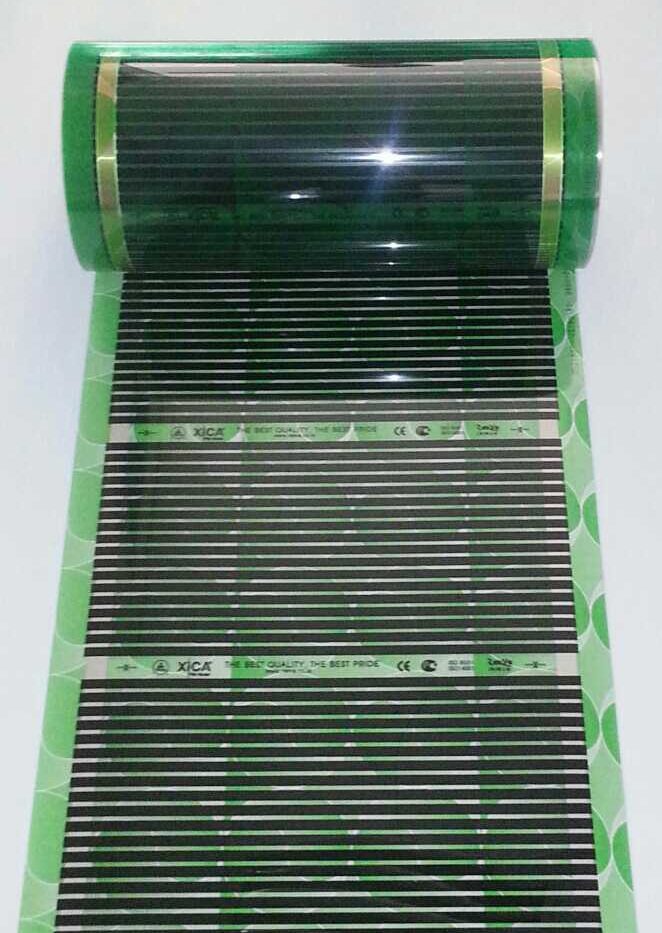
Film, or flexible heater, is one of the varieties of infrared heater. The design of such a heater is as practical as possible: a heating element is built in between layers of flexible heat-resistant film, which is hung on the wall, floor, or ceiling, and outwardly in its shape often resembles a picture.In connection with the latter, this option may interest those who are tormented by questions: how to fit the heater into the interior, where is it better to put it, where to find a suitable place, etc.
Functionally, the device repeats all the capabilities of an infrared emitter: during operation, the conducted heat is not directly transferred into the air, but first warms the surrounding objects.
Best models + prices
Only the best representatives of their classes are selected that are in demand in the modern market. Therefore, the rating representatives are sorted not so much by price, but by quality. The popularity of the models is also taken into account.
| Types of heaters | Ranking place | Model name | average price |
|---|---|---|---|
| Convector | 1 | NOBO C4F20 | 13 490 RUB |
| Convector | 2 | ELECTROLUX ECH / AG-1500 MFR | 3290 RUB |
| Skirting boards | 3 | MEGADOR MG-100 | 1690 RUB |
| Quartz | 4 | AEG IWQ 120 | RUB 2700 |
| Convector | 5 | Tepleko | 2400 RUB |
| Ceramic | 6 | Nikaten 330/1 | RUB 5100 |
| Quartz | 7 | Polaris PQSH-0208 | 1039 RUB |
| Ceramic | 8 | Nikapanels 330 | 3800 RUB |
| Film | 9 | JARKOFF JK 9002 | RUB 919 |
| Film | 10 | The Velvet season | 949 RUB |
Rating of quality heaters
NOBO C4F20
This Scandinavian convector device weighing about 8.5 kg and having dimensions of 132x40x8.7 cm is included in the rating due to the built-in capabilities (for all its structural simplicity) and the ability to heat a room up to 20m². The high cost is compensated by the wide functionality and pleasant performance. The system has a sensitive thermostat, climate control, built-in overheat shutdown function, cold protection, water protection, fire protection.

The model has a pleasant appearance that easily matches the interior design. Easy to install on walls or floors.
Advantages:
- Energy saving;
- High performance;
- Waterproof, explosion-proof and fireproof;
- Remote control using the remote control;
- Lack of electromagnetic radiation;
- Work offline.
Disadvantages:
- high price;
- no display.
Electrolux ECH / AG-1500 MFR
A small Swedish convector Electrolux ECH / AG-1500 MFR, with a maximum power of 1500 W. It has a lower price due to mechanical control, but in terms of its capabilities it is not much inferior to analogs. Just like the previous model, it is capable of serving an area of up to 20 square meters, and has an auto-off function when it overheats.
This convector has a dense moisture-proof body, so it is not afraid of installation in a room in high dampness, such as a basement, a glazed balcony, or a bathroom. To maintain comfortable conditions in such an environment, it has a built-in high-quality air purification system from dust, as well as a sensitive thermostat.
Advantages:
- fast heating;
- the presence of a thermostat;
- price.
Disadvantages:
- the surface of the case heats up quickly
- overheating and shutdown is inevitable when operating at full power.
MEGADOR 100 MG
Decent skirting convector that stands out in width. Product dimensions: 100х6х4 cm, weight - 1.8 kg. The heating area is 8 m2 + low energy consumption and high heat dissipation.
The hardware power is mechanically controlled by the user via an integrated interface. The switch has a convenient backlit indicator. And do not forget about the external protection of the case - protection against moisture is present.
The model is currently distributed in white and brown versions, as well as with different cable layouts for a more convenient location. Since this is a floor-standing device, the length of the cord is important: according to the standard it is equal to 1.2 m, but it can be extended if desired.
Advantages:
- balanced heat output and energy consumption;
- well mounted;
- backlit security indicator;
- ergonomics;
- profitability.
Disadvantages:
- not found.
AEG IWQ 120

Powerful quartz device from a reputable manufacturer. The housing is well coated with protection against moisture, wind and corrosion.As a result, the device can be used both at home and on the balcony, on the veranda, on the terrace, etc.
The model has a built-in thermostat. Management is mechanical. Heat transfer begins within 30 seconds after starting the mechanism, while after switching off (a light indicator is built on the switch), the same level of heat is still maintained.
Separately, it should be noted the simplicity and speed of installation, the compactness and convenience of the device during transportation (the body and consumables can be rotated at an angle of up to 45 °), the ability to direct heating and excellent energy saving.
Advantages:
- possibility of installation in open places;
- small size;
- temperature regulator;
- shutdown indicator;
- timer;
- backlight
- waterproofness.
Disadvantages:
- absent.
Tepleko
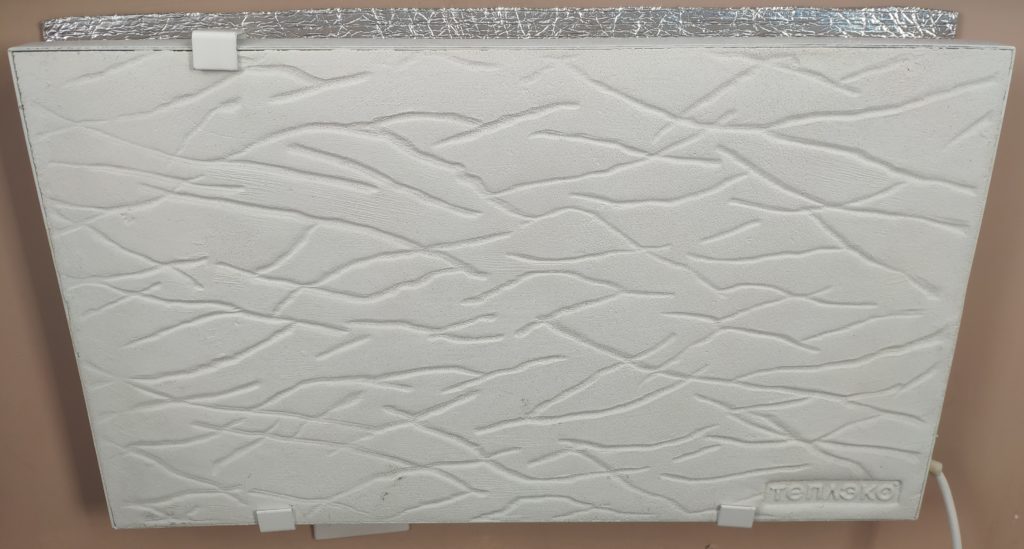
Electric heater of quartz type. Dimensions: 600x350x25 mm, weight - 12 kg. Like any quartz device, it is able to retain heat in the room for a long time, even after being turned off. The device consumes no more than 3.5 kW at max. power 400 watts.
The device is completely protected from external threats: from fire, moisture, and even from physical damage. Its design does not imply the presence of any noise, and the fact that it does not dry the air makes it accessible to any interior, without the danger of damage to art objects.
Unfortunately, the model does not have a built-in thermostat, so if you need to adjust the temperature, you will have to lay it yourself.
Advantages:
- reliability and durability;
- lack of noise;
- tight, protected case;
- low power consumption.
Disadvantages:
- lack of thermoregulation;
- fast heating of the case;
- heavy weight of the device.
Nikaten NT 330/1
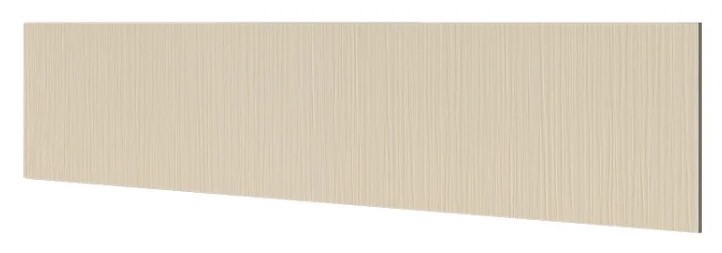
Popular ceramic heaters "Nikaten", NT series. This high-quality energy-saving panel has the power to heat rooms up to 7m², and the maximum power is reached in just five minutes. The power threshold is not very high and is 330 W, however, even after turning off for about 40-45 minutes, the air in the room remains warm. Energy savings are at 40%. Ceramic stone as the base material of the case has the highest heat dissipation.
Hermetically sealed, waterproof and fireproof metal completely eliminates the risk of getting burned or damaging the structure of the apparatus with liquid. Ease of assembly and the absence of complex technical elements allows it to serve without checks and visits to the service center for at least 25 years. Of the individual advantages, it is worth highlighting the pleasant performance and the complete absence of noise during operation.
If you look at how much such a model costs (the average price is around 5100 rubles), you can understand that this is a device of at least a high class.
Advantages:
- good design;
- thermoregulation;
- energy savings;
- heat accumulation effect;
- long service life.
Disadvantages:
- heavy weight (14 kg);
- high price;
- power does not exceed 330 watts.
Polaris PQSH 0208

The well-known brand “Polaris” presents its infrared quartz heater PQSH 0208. It is distinguished by its small size, easy transportability, ease of installation (take and put) the ability to quickly transfer from one place to another without the need for installation. Safe for the human body and for the surrounding atmosphere. Fireproof. Doesn't make noise. Equipped with an automatic shutdown system in case of rollover or overheating.
The device operates in two modes: 400 W and 800 W. In the second case, of course, energy consumption will significantly increase, but the area of the heated area will increase to 20m².
According to the reviews, everyone appreciated the heater for its light weight, high heat transfer, economical power consumption, and a well-thought-out security system.
Advantages:
- small size, lightness, mobility;
- the presence of two heating modes;
- automatic shutdown when overturning and overheating;
- heating area at maximum mode - 20m²;
- low noise level;
- does not affect the microclimate.
Disadvantages:
- absent.
Nikapanels 330
Nikapanels 330 is a small, square infrared panel, 60 x 60 x 4 cm in diameter, with a power of 400 W and suitable for heating rooms up to 7m². There are four colors for the model: coffee, beige, gray and amba.
According to the calculations, the system reduces energy consumption by 35-40%, but this happens due to the reduced hardware power. Thus, the device consumes only 2.3 kW / day. Nikapanels starts working in 5 minutes. after switching on, 20 min. later it goes to full hardware capacity, and then it goes on for another 60 minutes. cools down.
Due to complete isolation from external threats, the device can be used even in conditions of severe dampness or fire safety. The aluminum case prevents damage to the interior structure, and the beautiful ceramic texture helps to blend the panel into the interior of the room.
High-speed installation, high heating rate, long-term heat retention, as well as a long service life (up to 25 years) can be noted as pleasant advantages.
Advantages:
- durable body;
- protection from any external influence;
- high efficiency;
- easy installation.
Disadvantages:
- weight.
JARKOFF JK 9002
A flat, wall panel depicting a Parisian tower. Locks freely to any vertical surface with an attached tab. This mounting method, although not ideal, has a number of advantages compared to the floor mounting, which requires additional space.
A high-quality film infrared element is built inside, with a power of up to 500 W and capable of heating the surface of a room up to 100 ° C. Recommended for installation in rooms with an area of up to 5m². In addition, with its dimensions of 1050 x 600 mm and a weight of 0.5 kg, it is easy to transport.
The service life of the model is higher than that of the average representative of the class of IR heaters and floats within 30-40 years (excluding contacting the service center).
The lack of additional options and general utility are offset by the budget price of the product.
Advantages:
- nice design;
- compactness and small size;
- good heat transfer;
- easy installation;
- affordable cost.
Disadvantages:
- little functionality.
The Velvet season
The second place in the rating among flexible heaters and the last place in the overall rating in 2020 was given to the wall mat of the “Velvet Season” line. This series is famous for both decent technical characteristics and a wide variety of designs suitable for any interior: these are images of cute animals, and beautiful landscapes, and portraits of famous characters, and various paintings.
This small flexible panel, 580 x 1200 mm in diameter and weighing up to 320 grams, can be easily disguised as an ordinary painting. It will not only please with its compactness and fit into the interior, but even add an element of decor.
Fast heating ability, within 30 seconds. In this case, the air is not burned or dried. The moisture resistance is so high that it can be safely installed on a balcony (closed), in a bathroom, on a loggia and in other rooms with a high level of moisture.
Advantages:
- Fire safety;
- beneficial effect on the work of immunity;
- fast heating;
- electricity costs are reduced by more than 30%.
Disadvantages:
- high air cooling rate after shutdown.
Errors when choosing a heater
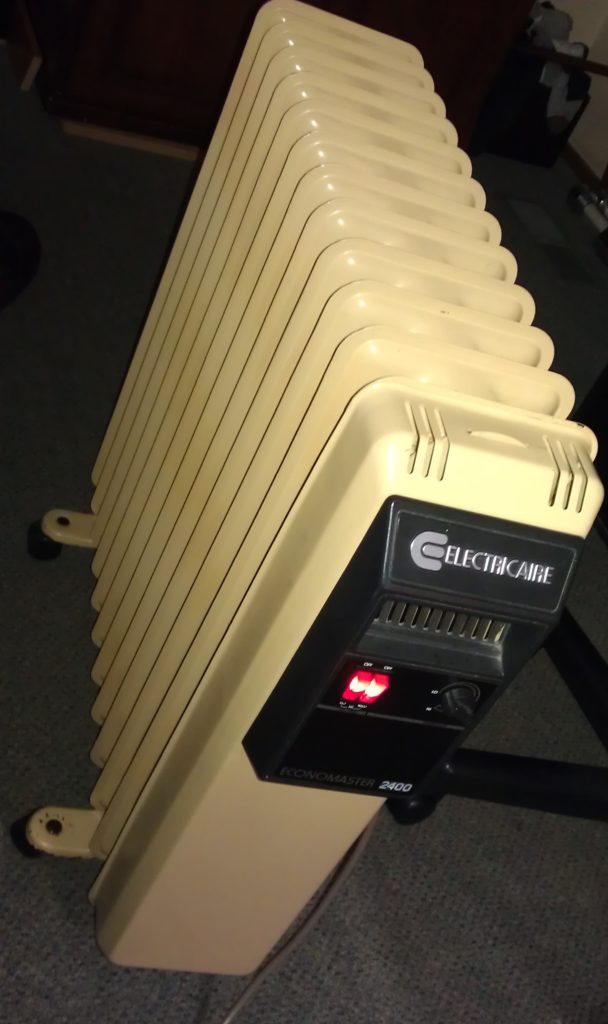
Trying to save
A negative result is often the result of ill-considered savings. One example of this is a fan heater, as a budget replacement for a heater. The joy of buyers from one-time savings on the heater is overshadowed over time by the fact that the fan heater at times exceeds the amount of the heater in terms of energy consumption.
Buying a brand instead of a product
In contrast to the previous point, many buyers, instead of speculating about the positive qualities of the product and what is suitable for them personally, are thinking about which heater is better and which brand is better to buy. In most cases, this only leads to unnecessary waste.
Ignoring fire safety
Electric heaters are often the cause of fires, so the approach to choosing a device with a heating mechanism must be serious and meet fire safety standards.
Choosing too noisy heater
Noise canceling devices are worth their weight in gold, but most heating appliances simply do not make any sounds. Fan heaters are considered the loudest, but models with metal cases also periodically make noise.
Buying a heater that does not fit into the interior
In addition to compliance with the technical parameters, the device must match the appearance of the room, this must be paid attention to at the stage of selection in the store. This concerns not only the functional features of the device in interaction with the environment, but also the design features.













I recommend the Russian-made Tepleko energy-saving heaters.